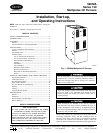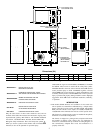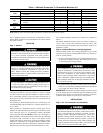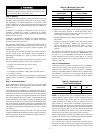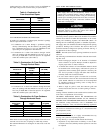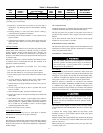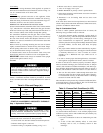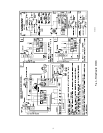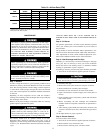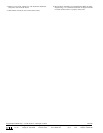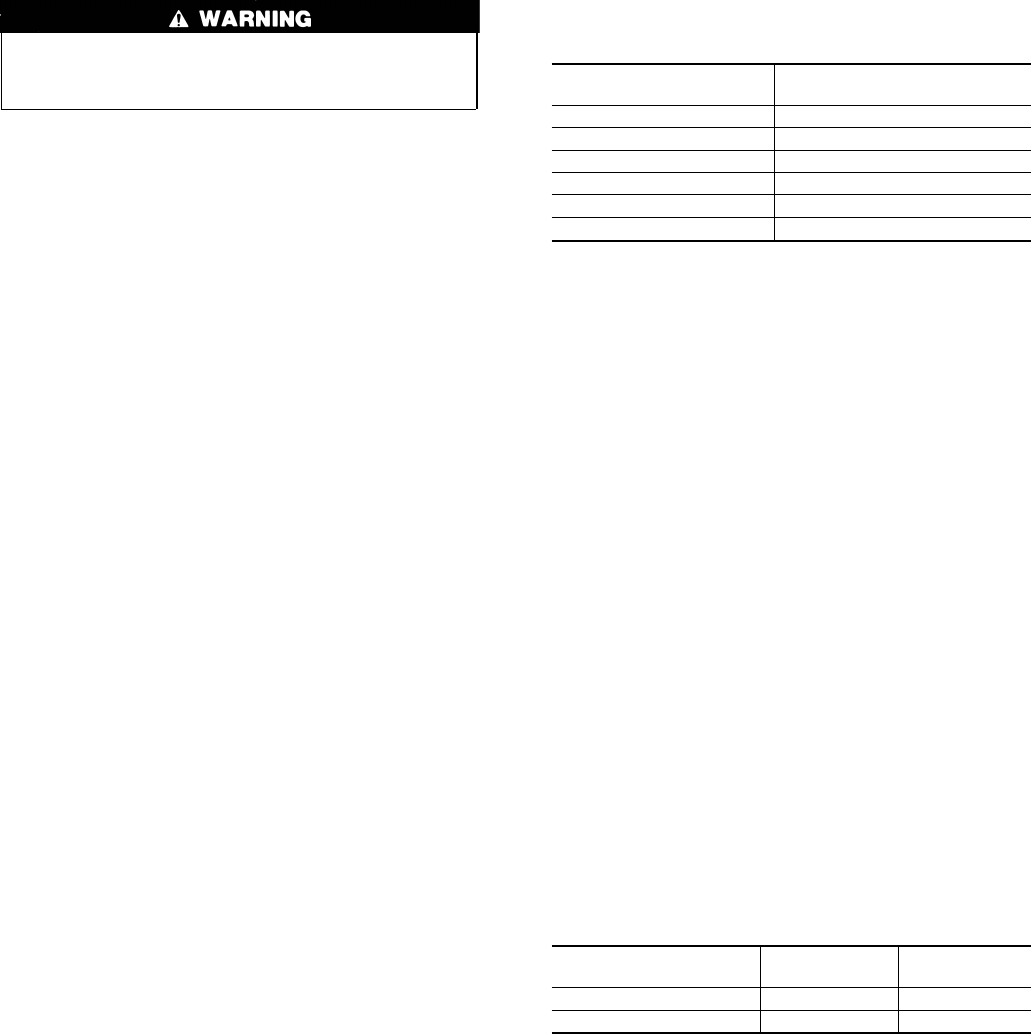
Do not block combustion-air openings in the furnace. Any
blockage will result in improper combustion which may result
in a fire hazard and/or cause bodily harm.
Step 2—General
This furnace should be installed in a location in which facilities for
ventilation permit satisfactory combustion of oil, proper venting,
and maintenance of ambient temperature at safe limits under
normal conditions of use. The location should not interfere with
proper circulation of air within the confined space. (See NFPA-31,
Section 1.5.)
In addition to air needed for combustion, process air shall be
provided as required for: cooling of equipment or material,
controlling dew point, heating, drying, oxidation or dilution, safety
exhaust, and odor control.
In addition to air needed for combustion, air shall be supplied for
ventilation, including all air required for comfort and proper
working conditions for personnel.
The barometric draft regulator (included with furnace) shall be
installed in same room or enclosure as furnace in such a manner as
to prevent any difference in pressure between regulator and
combustion-air supply.
Air requirements for operation of exhaust fans, kitchen ventilation
systems, clothes dryers, and fireplaces shall be considered in
determining the adequacy of a space to provide combustion-air
requirements.
The lack of a proper amount of combustion air can lead to serious
furnace operational problems. Some of these problems are:
1. Excessive oil burner after-drip, and oil fumes.
2. Sooting.
3. Melted oil burner ignitor/relay control.
4. Air band or air turbulator settings more open than normal.
5. Lockouts on start-up.
The requirements for combustion and ventilation air depend upon
whether furnace is located in a CONFINED or UNCONFINED
space.
Step 3—Unconfined Space
An unconfined space must have at least 50 cu ft for each 1000
Btuh of total input for all the appliances (such as furnaces, clothes
dryers, water heaters, etc.) in the space.
In unconfined spaces in buildings of conventional frame, brick, or
stone construction, infiltration MAY be adequate to provide air for
combustion, ventilation, and dilution of flue gases. This determi-
nation must be made on an individual installation basis and must
take into consideration the overall volume of unconfined space, the
number of windows and ventilation openings, the number of doors
to the outside, internal doors which can close off unconfined space,
and overall tightness of building construction. Consideration must
also be given to the amount of storage items (furniture, boxes, etc.)
within the unconfined space which take away from the air volume.
(See Table 2.)
Many new buildings and homes (and older ones that have been
weatherized) MUST BE considered as being of tight construction,
therefore, infiltration will not be sufficient to supply necessary air
for combustion and ventilation.
A building can be considered as being of tight construction when:
• Walls and ceilings exposed to outside atmosphere have a
continuous water vapor retarder with a rating of 1 perm or less
with openings gasketed or sealed, and/or
• Weatherstripping has been added on operable windows and
doors and/or
• Caulking or sealants are applied to areas such as joints around
window and door frames, between sole plates and floors,
between wall-ceiling joints, between wall panels, at penetra-
tions for plumbing, electrical, and fuel lines, and at other
openings.
If combustion and ventilation air must be supplied to an uncon-
fined space from outside, an opening with a FREE AREA of not
less than 1 sq in. per 1000 Btuh of total input of all appliances
within unconfined space (but not less than 100 sq in.) must be
provided. This opening must be located such that it can not be
blocked at any time.
Step 4—Confined Space
A confined space has a volume of less than 50 cu ft per 1000 Btuh
of the total input rating for all appliances installed in that space.
When furnace is installed in a closet or enclosure, 2 ventilation
openings, with OPEN AREA as dimensioned in example below
are required for combustion air. The openings should be located
about 6 in. from top and bottom of enclosure at front of furnace.
(See Table 3.)
NOTE: In calculating free area, consideration shall be given to
blocking effect of louvers, grilles, or screens protecting openings.
Screens used shall not be smaller than 1/4-in. mesh and shall be
readily accessible for cleaning. If free area through a louver or
grille is known, it shall be used in calculating size and free area
specified. If design and free area are not known, it may be assumed
that wood louvers have 20 percent free area and metal louvers and
grilles have 60 percent free area. Louvers shall be fixed in open
position or interlocked with furnace so they open automatically at
furnace start-up and remain open during furnace operation.
The size of the openings depends upon whether the air comes from
outside of the structure or an unconfined space inside the structure.
ALL AIR FROM INSIDE THE STRUCTURE
For a confined space, where air is taken from an interior space, 2
permanent openings of equal area are required. One opening must
be within 12 in. of ceiling and the other within 12 in. of floor. Each
Table 2—Minimum Floor Area
For Unconfined Space
58CMA FURNACE
INPUT BTUH
MINIMUM SQ FT WITH
7-1/2 FT CEILING
70,000 467
91,000 607
105,000 700
119,000 793
140,000 933
154,000 1026
Table 3—Combustion Air
From Confined Space
58CMA FURNACE
INPUT BTUH
LENGTH
(IN.)
HEIGHT
(IN.)
70,000-105,000 16 8
119,000 20 10
4



